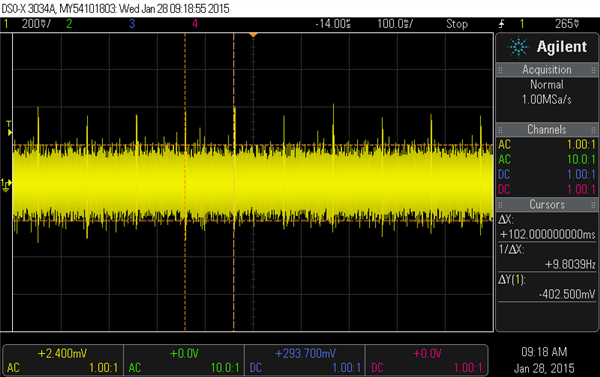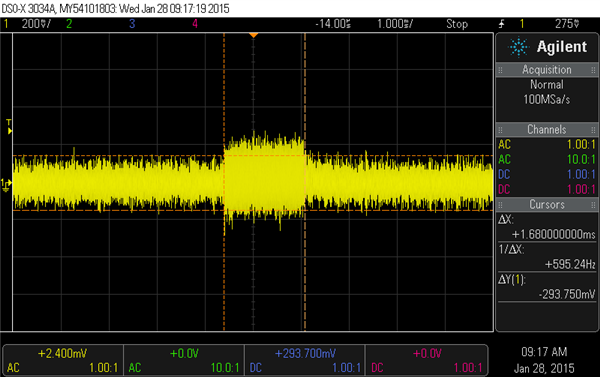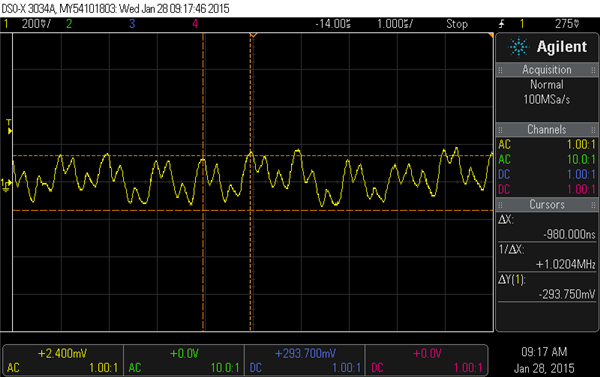Hi I have been using Opa355 in my current products with good success. (Shipping in several K units). It is used in a Tia with 8M gain at 1MHz signal.
I recently started a new design and this design uses wifi. With the new design, I see an in band Rfi rectification due to wifi. Design is ac coupled simple transimpedance amplifier. I amplify in two stages. 400k in first stage and 20 in second. I use 1.8v as reference voltage and opamp is using 4v supply. I have very little noise and excellent signal performance when wifi is turned off.
The only issue is really Rfi rectification. When wifi is transmitting I see a DC shift in first and second stage output. Due to high gain even a small shift result in nasty output swings. The design uses high quality bypass caps on supplies, 15v bias on the pd and 1.8v reference ground. (I still see the issue when I remove the pd from the circuit so it is clearly picked up by either my ground or opamp)
- I have added 100pf to the reference pin (+) which helped but added noise.
- I tried shielding using copper tape but I cannot get reliable results. Looks like I need to build something more sophisticated but not so sure it will work.
- spin another board with other protections etc.
- use another opamp with better Rfi tolerance is the last resort I really like this opamp and don't want to change but I don't know how to move forward.
Assuming I respin the board what precautions I can take? Appreciate inputs. Thx. Kt




